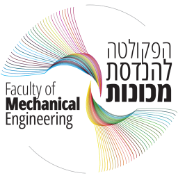During high-strain-rate plastic deformation, not all plastic work is dissipated as heat; a fraction of the energy is stored in the material. The Taylor–Quinney coefficient (TQC) quantifies the fraction of plastic work converted into heat. To this day, the microstructural origin of the stored energy, namely the energy stored in dislocations and grain boundaries (GBs), remains an open question. In this work, we quantify TQC in Cu–Zr polycrystals using molecular dynamics (MD) simulations. Cu–Zr alloys here are chosen as a model system that permits controlled tuning of GB composition and thickness, which allows isolating the contribution of GBs to the TQC.

The effect of grain boundaries in Cu-Zr systems on the energy dissipation during plastic deformation
Are you interested in learning the profession of the future?
Faculty of Mechanical Engineering, Technion - Israel Institute of Technology, Haifa
"*" indicates required fields





